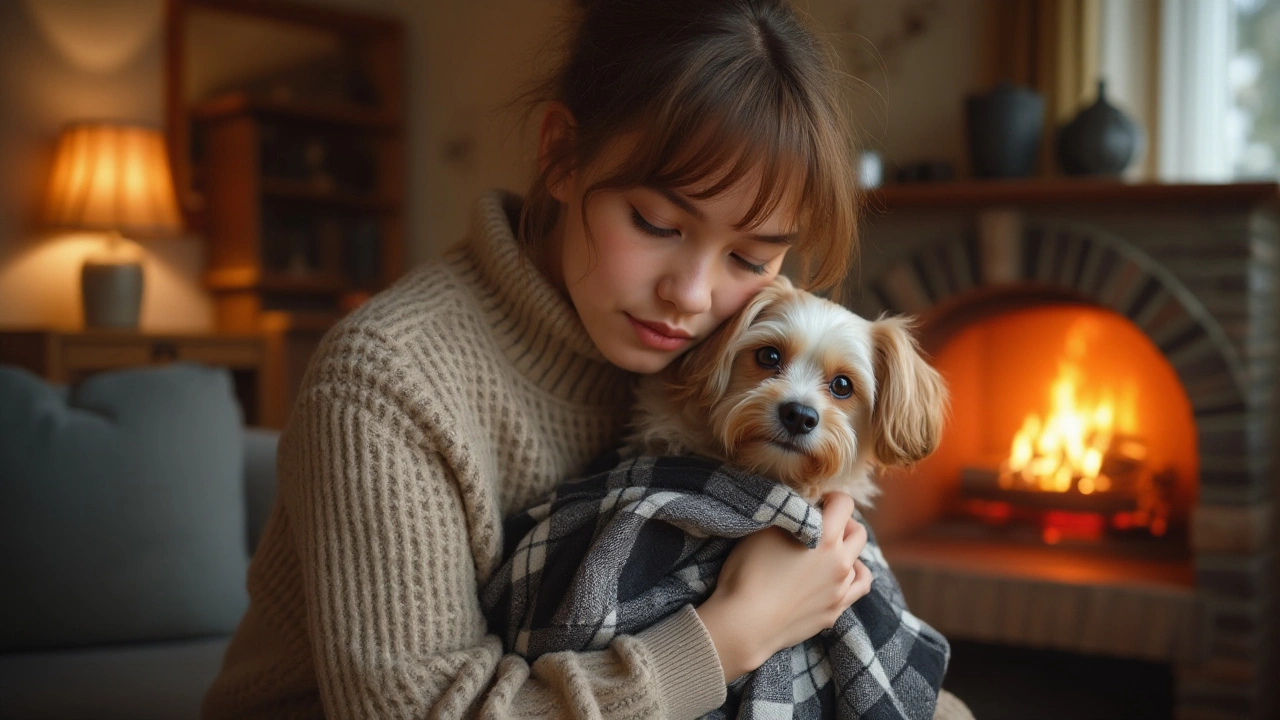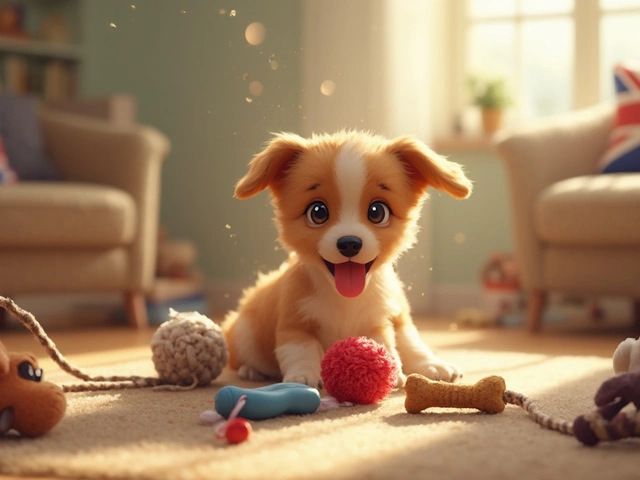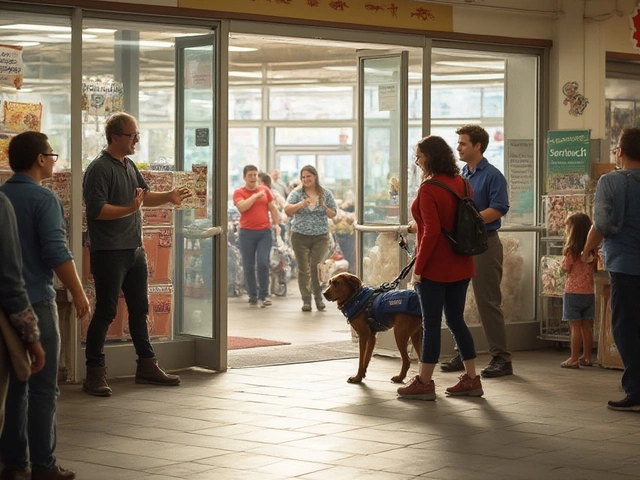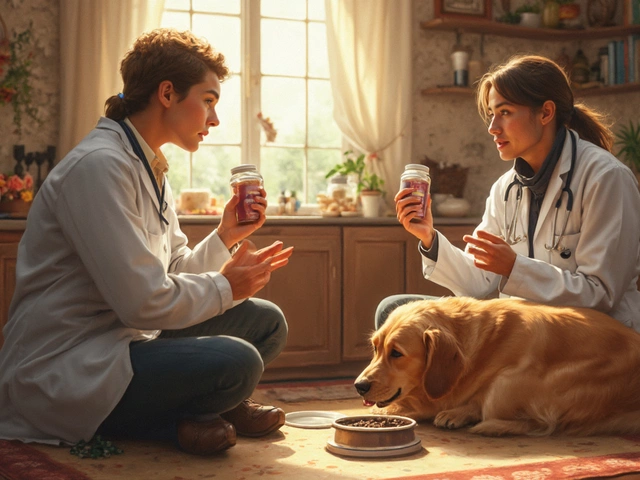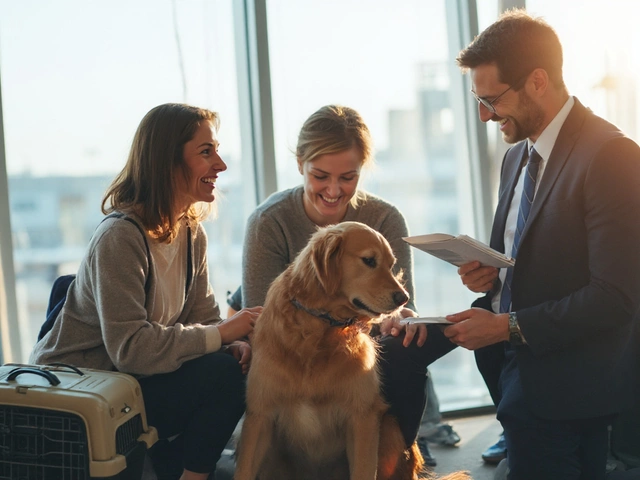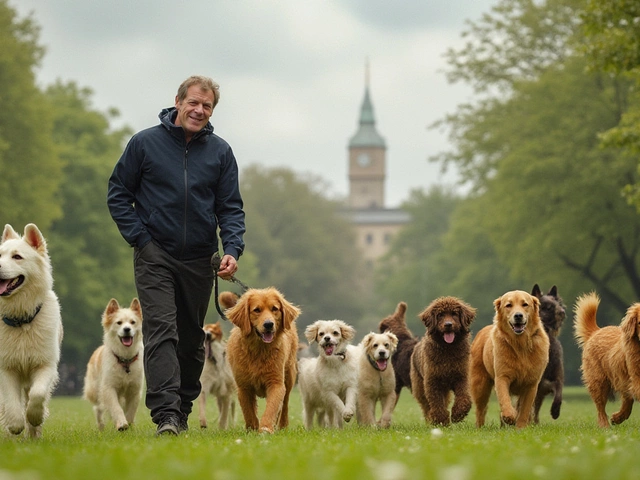Have you ever found your furry friend feeling a bit down after returning from a grooming session? Watching your pup parade around in their fresh haircut can sometimes be overshadowed by their discomfort or crying. While it might feel like a mystery, there are a few common reasons why your dog might feel this way. Understanding these reasons and offering them comfort can help make grooming less stressful in the future.
Dogs, just like humans, can feel uneasy when experiencing something new or unfamiliar. Grooming may involve being in a strange environment, handled by a new person, or dealing with a haircut that feels unusual. Knowing how to ease your dog's stress can go a long way in making these experiences more pleasant for them. Let's explore how you can support your dog during and after their grooming adventures.
- Common Causes of Post-Grooming Stress
- Understanding Your Dog's Crying
- How Haircuts Can Affect Dogs
- Comforting Your Dog After Grooming
- Tips for Stress-Free Grooming Sessions
Common Causes of Post-Grooming Stress
Your dog went into the groomer's looking shaggy, and came out looking sharp, but now they seem upset. What gives? One of the main reasons dogs can feel stressed out after a dog grooming session is simply due to the unfamiliarity of the experience. Grooming salons can be bustling places with strangers, loud noises from dryers and buzzers, and the unknown scents of other animals all around. For many dogs, this sensory overload can be unsettling and even scary.
On top of the unsettling environment, the actual process of grooming can be quite a sensory adventure for them. Dogs are sensitive creatures. Noises that are commonplace to us, such as clippers and dryers, might seem alarming to them. Think of it as akin to a person who feels anxious in a dentist's chair while unfamiliar tools whirl and buzz. For dogs with anxiety, the unfamiliar hands of the groomer and the odd sensation of the clippers can leave them feeling rather uneasy.
Moreover, some dogs might feel physically uncomfortable after a haircut. Especially if the cut is shorter than the dog is used to, it can be compared to stepping outside with a cold breeze after one's coat is removed. This change can leave them feeling vulnerable or exposed until they get used to it. Additionally, certain styles may tug or feel tight, adding an unfamiliar sensation to the mix.
Physical discomfort isn't the only issue; the emotional impact of being separated from you, their trusted family member, can add to their stress. Dogs are social animals, and being taken to a new environment without their favorite people around can cause anxiety. Some may interpret being left at the groomer as abandonment, no matter how lovingly they're cared for. Separation anxiety is a real concern for many pet owners and can contribute to dogs crying after grooming.
Let's not forget that past experiences play a pivotal role too. If a dog has had a negative grooming experience in the past, it can trigger a stress response the next time they face grooming. Dogs remember more than we give them credit for, and past trauma can leave long-lasting impressions. Ensuring your pup routinely has positive experiences can help them feel more at ease during future grooming sessions.
The affects on our canine companions are broad but understandable.
"The noise, the separation, the physical sensations—they all contribute to stress," notes Dr. Jane Bicks, a renowned veterinarian and author. "But understanding these common stressors allows us to make grooming a more pleasant experience for our pets."This understanding enables pet owners to approach grooming with empathy and plan ways to mitigate stressors for a smoother experience all around.
Understanding Your Dog's Crying
When your dog cries after a grooming session, it can leave you puzzled, not knowing if they’re in pain or simply confused. The good news is that understanding the underlying reasons behind their whimpers can help you address their needs more effectively. Dogs are creatures of habit, and any shift in their routine, such as a new stranger handling them or the buzz of a grooming clipper, can cause significant stress. Imagine stepping into a roller-coaster for the first time; the anticipation can be nerve-wracking. This is quite similar to what your pup might be experiencing. Pet stress is not unusual after a grooming session, especially when it involves unfamiliar sensations like the sound and feel of buzzing clippers or the coolness of water from a bath.
Another reason could be physical discomfort. A dog may feel itchy or even a little sore, particularly if their fur was matted and required close clipping. This physical sensation might translate to feelings of vulnerability, leading to restless behavior. Some dogs might undergo sensory overload, where the multitude of sensations—touch, sound, sight—during grooming can be overwhelming. Dr. Patricia McConnell, a respected animal behaviorist, once noted, "A dog's world is colored by a tapestry of sights, sounds, and smells we can't even begin to comprehend."
Dr. McConnell emphasizes this unseen complexity in canine emotional responses.The difference in appearance post-haircut may also contribute; just as a bad haircut can make people feel self-conscious, dogs might also sense that something is different or off, adding to their anxiety.
Lastly, it’s essential to consider the emotional state they return home with. Dogs are incredibly intuitive and can pick up on human emotions. If you're stressed, worried, or feeling guilty about their haircut, your dog might feel these emotions and react accordingly. Addressing the ambiance of post-grooming care is critical. A relaxed, warm environment with plenty of reassurance can help your pup realign with their comfort zone. Remember, your response can shape their reaction. Offering them a favorite treat or toy post-haircut can also help create positive associations. By recognizing these factors, you not only improve your dog’s well-being but also strengthen the bond between you and your furry friend.
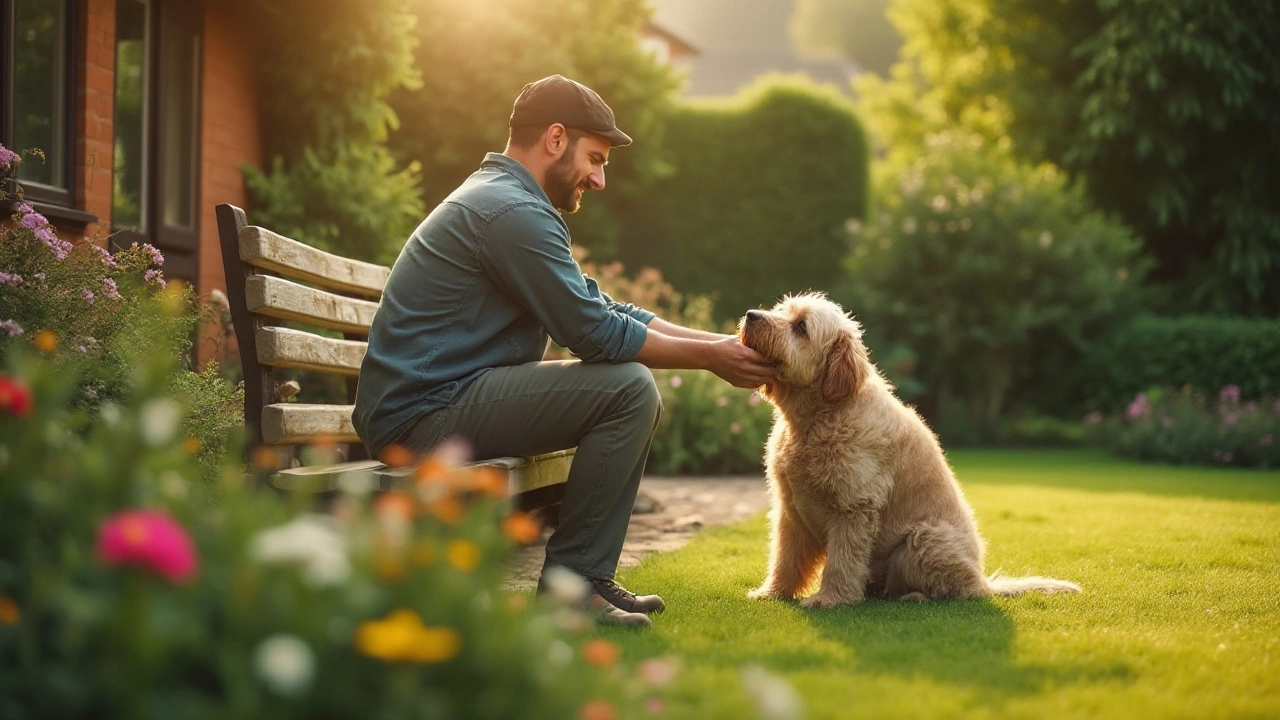
How Haircuts Can Affect Dogs
For our furry companions, the process of getting a haircut can be a complex and sometimes unsettling experience. Unlike humans who might enjoy the luxury of a salon visit, dogs may feel apprehensive due to several reasons stemming from their unique perceptions. The entire grooming affair, which includes strange sounds from clippers, the sensation of water during a bath, and the handling by someone unfamiliar, could potentially contribute to their discomfort. To put it simply, this routine procedure disrupts their everyday norm, challenging their sense of security and familiarity.
One of the main reasons a dog might cry after a haircut is because the sensation is completely foreign to them. Imagine having your senses heightened to levels far beyond human capability, where even the slightest change in your environment is palpable. For dogs, their coat provides not just protection but also sensory input. An unexpected change in their coat's length alters the feedback they receive from their surroundings, possibly increasing sensitivity or creating an entirely new sensory landscape. This can lead to confusion and anxiety, especially if it's their first cut.
Understanding Coat and Temperature Regulation
A dog's coat is also critical in regulating body temperature. Different breeds have varying coat types that serve specific purposes. For example, double-coated breeds like Huskies have an insulating layer that helps them stay cool in summer and warm in winter. Excessive trimming of such coats can disrupt this natural insulation, thus affecting their comfort levels. You might notice your dog shivering or seeking warmer spots post-grooming. Such reactions aren't just physical but can also be emotional, as their usual protective layers are compromised.
A study from the American Veterinary Society of Animal Behavior highlights, "The sensitivity of a dog's skin post-haircut is often overlooked. It is essential to approach grooming with the same respect one would afford any environmental change in a pup’s life."
Psychological Impact of Grooming
The psychological effects of grooming should not be underestimated. For dogs, being at the groomer could be similar to a human visiting the dentist, an unfamiliar and often stressful experience. The environment can be bustling and noisy, adding to the sensory overload dogs might already be experiencing. It’s not uncommon for dogs to develop an aversion to clips and other grooming-related sounds, associating them with the discomfort they felt during previous sessions. Recognizing these psychological cues and properly addressing them can help in creating a more positive grooming routine for your pet.
Finally, keep in mind your dog's temperament. Some dogs are naturally more anxious or sensitive, and thus, might react more intensely to grooming procedures. Observing your pet's cues—changes in behavior, shivering, or excessive vocalization—can guide you in providing the support they need. Offering treats, comfort, and reassurance post-grooming can ease their transition back to their usual selves, ensuring their well-being is prioritized in every grooming experience.
Comforting Your Dog After Grooming
Bringing your dog home after a grooming appointment and seeing their little face filled with unease can be a heart-wrenching experience. It's important to remember that for a dog, a grooming session might sometimes feel like a rollercoaster of emotions. The good news is that you can play a significant role in reassuring and comforting your pet. First, create a calm and familiar environment upon your pup’s return. Familiar scents and surroundings can instantly soothe them, helping to dissipate any residual stress. Snuggle time can be incredibly beneficial, strengthening your bond while promoting a sense of security.
Start by offering them a special treat or two. Reward-based comfort is a great way to show love and reinforce positive feelings associated with grooming experiences. This might help your dog associate grooming with happy moments instead of fear or anxiety. Keep in mind that some dogs might just need to vent their emotions vocally. If they need to bark it out, let them! Being an attentive and patient listener can be all the support they need. Lending your undivided attention gives them assurance and typically helps in them feeling understood and cared for.
“A calm and reassuring presence is the best remedy post-grooming. The bond you build with your pet can substitute medications.” — Dr. Lisa Miller, Animal Behaviorist
Consider a nice, calm walk after the haircut. Venturing into the fresh air can be a perfect antidote to any lingering stress. Movement stimulates endorphins which usually leads to a happier and more relaxed demeanor. Plus, your dog will enjoy some undisturbed quality time with their favorite person—you! Through leisurely exploration or an energetic frolic around the park, walks can significantly uplift their spirits.
Many pet parents find comfort items such as their favorite toy or blanket helpful during these moments. If your dog loves their old squeaky plushie, now is an excellent time to reintroduce it. The comfort of something familiar can do wonders. Don’t hesitate to give them a gentle massage too. This not only feels good but also encourages relaxation and reduces muscle tension. Your dog will appreciate the tender attention.
Lastly, maintain a consistent routine post-grooming. Routine offers solace in predictability for dogs. Returning to their normal schedule can immensely reduce anxiety. Whether it’s feeding time or that favorite napping spot by the window, consistency helps signal that all is well in their world. Remember too, that a subsequent grooming day can be prepared better with these practices, eventually reducing any remaining fear of the snip-snap all by itself. As you find ways to support them through grooming processes, the experience will become less daunting.
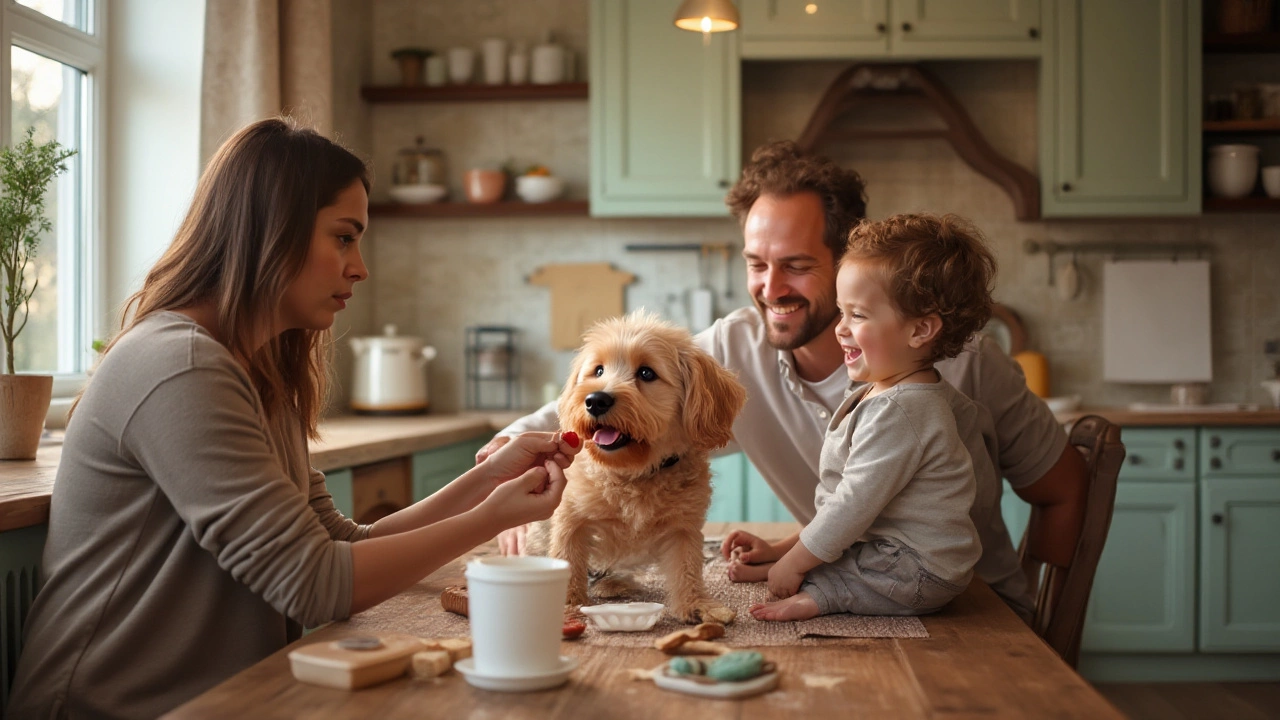
Tips for Stress-Free Grooming Sessions
Grooming your dog can sometimes feel like a daunting task, especially if your pet associates the process with stress or discomfort. However, creating a serene grooming experience doesn't have to be a far-fetched dream. The first step towards a stress-free session is helping your dog feel comfortable and familiar with the grooming environment. You can start by visiting the groomer's before the actual appointment to let your dog sniff around and meet the staff. This will help them get used to the surroundings and not feel thrown into an alien world on the day of grooming. Consistency in the grooming place also matters, as dogs thrive on routine and familiarity. If they're used to one specific place or person grooming them, it's best not to change it suddenly.
Engaging your dog in regular at-home grooming rituals can also make a significant difference. Letting them experience brushing or nail clippings at home can normalize the process. Introduce these practices slowly, perhaps after playtime when they're more relaxed. Praise and reward them with treats when they allow you to gently comb through their fur or handle their paws. Dogs, much like us, respond positively to rewards. This approach can transition easily to professional grooming, as your dog would already associate the events with some level of certainty and positivity. Engaging in simple grooming at home can help you spot any anxiety triggers early, which you can then communicate to your groomer.
Music can have magical effects on a dog's mental state during grooming. Playing calming music in the grooming area can shift your dog's focus from fear to relaxation. According to some studies, classical music has therapeutic benefits and can soothe pet stress. If you're into statistics, Petco’s pet music study shows that 86% of dogs comforted by a soothing musical atmosphere showed noticeable calmness. You can introduce this at home, too, and the familiar tunes can help in making grooming trips less troubling.
“Comfort is the key to a successful grooming experience. When dogs are familiar with the smells, sounds, and even the gentle hum of the clippers, they feel more at ease,” shares Dr. Emily Wilson, a well-known veterinarian and animal behaviorist.
Understanding your pet's limits and being prepared for quick breaks during a session is also integral. Just like any stressful activity, short breaks can help your dog reset and continue without feeling overwhelmed. While engaging with your pet, always be on the lookout for signs of distress like excessive drooling, trembling, or trying to escape. Taking a short play or cuddle break can help alleviate their anxiety. In addition to breaks, using the right equipment can contribute significantly toward a smoother grooming affair. Having tools that are suited for your dog's coat type, whether it's a set of clippers for their haircut or a brush that won't irritate sensitive skin, makes a big difference. Knowledge about your dog’s specific grooming needs can enhance the experience for both you and your pet.
Finally, reaching out to a professional groomer who understands and accommodates your dog's needs can be a game-changer. Search for groomers who are trained in handling anxious animals, as their techniques can drastically reduce your dog's grooming fears. Don't shy away from discussing your dog's temperament and past experiences with them, as this can help craft a grooming plan tailored for your pet. Calm dogs who feel securely managed by their groomer are less likely to show signs of stress post-visit. By following these thoughtful tips, you can transform your dog's grooming session into something informative, enjoyable, and most importantly, a stress-free activity for both of you.

